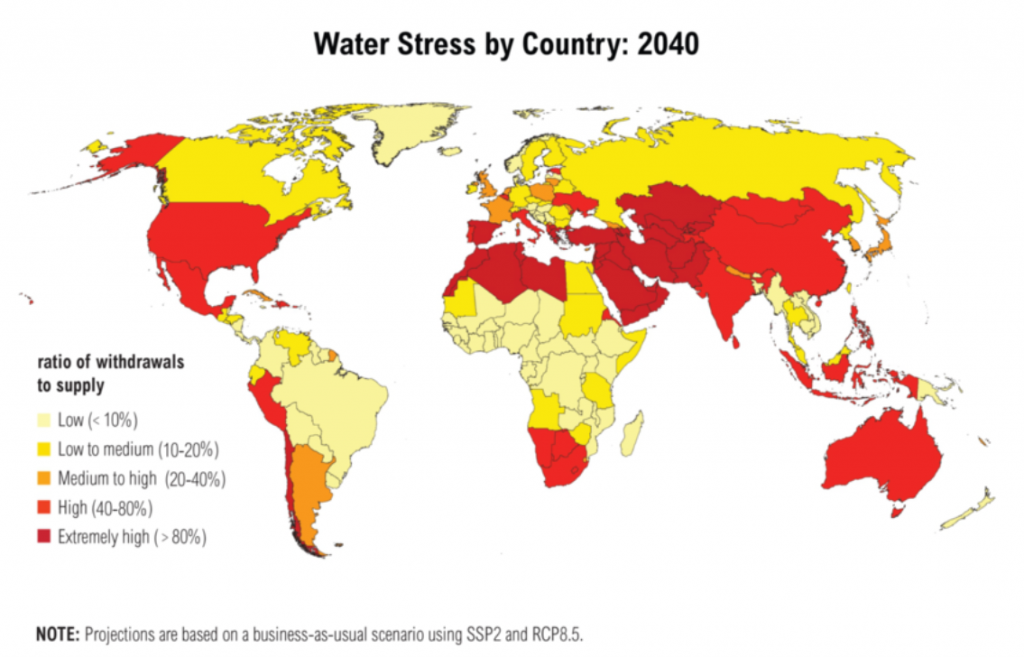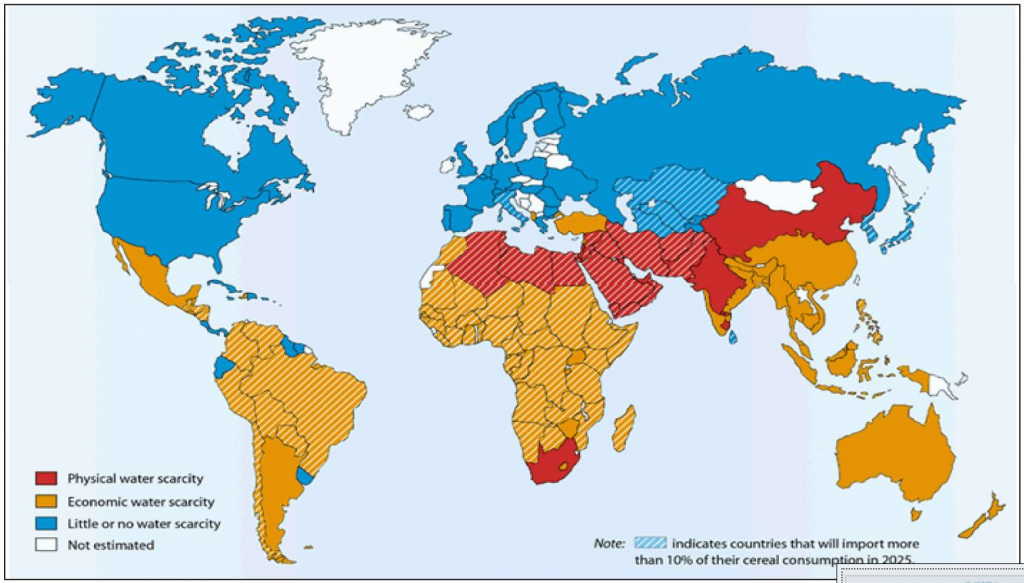The idea came to me yesterday that maybe I should start a community where I can interview the leaders around the world who are helping to bring three of my favorite subjects, Solar Power, Clean Water, and Agricultural Training and Resources. My initial search on Google harvested profound results. I think I’m really on to something.
The first search result landed me on a page titled “3rd World Water Forum.”
Theme issues included a range of topics related to water including: climate; supply, sanitation, hygiene and water pollution; cultural diversity; nature and environment; cities; governance; floods; integrated water resources management and basin management; peace; agriculture and food; poverty; financing water infrastructure; and dams and sustainable development. https://enb.iisd.org/download/pdf/sd/sdvol82num8.pdf
What if we can come together to discuss five themes in sub-groups: safe drinking water and sanitation; water for food and development; water pollution prevention and ecosystem conservation; disaster mitigation and risk management; and water resources management and benefit sharing.
A BRIEF HISTORY OF GLOBAL WATER ISSUES
Freshwater is a finite resource imperative for sustainable development, economic growth, social stability, world health and poverty eradication. Convened every three years, the World Water Forum was created by the World Water Council (WWC) to discuss these important issues. The WWC is an international water policy think tank established in 1996 to respond to pressures on the Earth’s freshwater resources.
The Forum’s objectives are to: raise the importance of water on the political agenda; support the deepening of discussions toward the solution of international water issues in the 21st Century; formula key challenges for the future as meeting basin water needs, securing food supply, protecting
ecosystems, sharing water resources, managing risks, and valuing and governing water wisely.
AGRICULTURE, FOOD AND WATER: This theme was organized by the UN Food and Agriculture Organization (FAO), International Commission on Irrigation and Drainage (ICID) and Japan’s National Committee of ICID. Participants met in 14 sessions from 19-20 March to discuss: water as a source of food security; diversity and multifunctional roles of irrigation; agricultural water productivity and externalities of irrigation; water for
food and rural development; alternative forms of agriculture; and agriculture, food and water in semi-arid areas. During the sessions, participants called for recognition of the diversity of irrigation practices and awareness raising on the positive externalities and multifunctional roles of irrigation. Other sessions emphasized greater investment in irrigation infrastructure and modernization. Delegates stressed the need to support capacity building of farmers and incorporate participatory approaches into planned irrigation projects. Some participants urged a shift in approach from the traditional participation of farmers in government projects to the participation of governments in farmers’ projects. Also recommended were a database of appropriate technologies and experiences in rice paddy cultivation, and research and development in arid-zone irrigation. The irrigation industry stressed that it possesses the technology and know-how to improve yields with less water, but not the decisionmaking power to help the poor. Several sessions emphasized the
need for rural development, supporting: an integrated water resources development and management approach to food production; the building of more dams for irrigation; the rehabilitation of wasteland; and the recycling of water to increase arable lands. Some participants recommended that effective micro-organisms be considered as an environment-improving technology for sustainable food production. Some recommended establishing new institutions and technologies to harmonize agricultural development with environmental conservation. Regarding integrated management of water with a human face, participants stressed
recognition of challenges faced by communities devastated by HIV/AIDS. Delegates also highlighted the challenge of keeping projects autonomous and farmer-centered when partnerships with government and experts are necessary.
Several participants raised concerns regarding ownership of irrigation systems and problems caused by large-scale agriculture, and suggested including reference to the following issues in the draft statement: ecosystem functions of agriculture; environmentally-friendly technology; national population control; and addressing the global-shift towards non-vegetarian diets.
Draft Theme Statement: The draft statement recommends more strategic development of available land and water resources. It also recommends that investment in irrigation systems be affordable and pro-poor, and calls for the modernization of irrigation, including upgrading existing infrastructure, adapting institutional frameworks, and encouraging participation of users in the decision-making process. It recommends research in options for increasing agricultural water productivity and in understanding the multiple roles of agriculture. The statement encourages constructive dialogues between irrigation farmers and other stakeholders,
and states that the agricultural sector must be proactive in shouldering the negative environmental and health impacts of irrigated agriculture and enhancing its positive externalities.
WATER AND ENERGY: This theme was convened by the International Hydropower Association. Participants met in three sessions and a closing plenary, from 16-17 March, to inaugurate the first international summit on the sustainable use of water for energy and to address hydropower and the environment and large hydropower infrastructure.
Theme Statement: The theme statement recognizes the need to secure sustainable and equitable supplies of water and energy. It notes several key issues, including that: water and energy resources are interlinked; global population growth is intensifying the pressure on water and energy needs; sustainable development requires greater expenditure to minimize the negative impacts of infrastructure; and developing countries lack the financial capacity necessary to meet the high capital cost of development. It also lists current actions, including the development of: tools and methodologies to evaluate options and identify good practices; new
approaches to sustainable water and energy management; and energy supplies.
The statement recommends: integrating water and energy
issues; working to maximize hydropower’s contribution to
sustainable development; promoting stakeholder consultation and
awareness; increasing political and financial commitments; introducing stronger financial incentives to reduce consumption, improve efficiency, extend less-polluting schemes and promote new development; using the criteria of availability, flexibility and reliability of supply in options assessments; interconnecting power systems to increase security, optimize plant operation and minimize environmental impact; and further studying the net greenhouse gas emissions from reservoirs in tropical lowland areas.
WATER, FOOD AND ENVIRONMENT: This theme was convened by the Secretariat of the Dialogue on Water, Food and Environment from 17-18 March, and entailed discussions in opening and closing plenaries and 11 sessions on water needs for nature and food production. The sessions discussed, inter alia: water management for agriculture; on-farm assessments of livestock production for environmental improvement; management of water resources and biological production in coastal environments; and local visions on water, food and environment. Theme Statement: The theme statement notes challenges for the water, food and environment debate, including: simultaneously achieving water, food and environmental security; bridging the gap between the agriculture and environment sectors; and creating a balance between water for food and water for the environment. The statement recognizes key international initiatives addressing these challenges, such as the Dialogue on Water, Food and Environment, which aims to improve water resources management by
bridging the gap between the food and environment sectors through open and transparent dialogues and knowledge sharing. Recommendations in the theme statement include: adopting water resources management at the river basin level as the guiding principle for striking the balance between water for food and water for environmental security; considering the environmental, social, economic and political implications of using virtual water trade as a strategic instrument in water and food security policies; elaborating the concept of environmental flow requirements; and
adopting a target for productive use of water.
WATER FOR FOOD AND RURAL DEVELOPMENT:
This meeting, chaired by Ian Johnson, Vice-President of the World Bank, began with presentations and reports from the Water Journalist and Gender and Water Panels. Presenters, inter alia: outlined solutions for addressing the impacts of water-intensive agriculture; noted the need to eradicate malnutrition and respond to changing food demands; highlighted the importance of improving irrigation-system management; called for legislation ensuring transparent decision making, and advocated genderresponsive water management activities. Several countries outlined challenges in, and national strategies on, providing water for food production and rural development, while others addressed the lack of financial resources for effective water management in developing countries. One developing country called for harmonization and coordination of donor aid activities, while several emphasized the need for fair water pricing. One developing country expressed regret that discussions had not considered existing decisions, including those agreed
under the UN Convention to Combat Desertification (CCD). A
representative from the CCD Secretariat questioned how poverty
reduction and sustainable food production can be achieved if other
sectors are given priority in the allocation of resources. Several
countries noted the effects of climate change on water resources.
On the Ministerial Declaration, one developing country proposed
a reference to the link between unsustainable agricultural practices
and water scarcity, and a developed country suggested reference to
the effect of HIV/AIDS on agricultural production.
FIFTH INTERNATIONAL SYMPOSIUM ON WATER:
This symposium, to be held from 23-27 June 2003 in Cannes, France, is organized by the International Symposium on Water. Participants will address the topics of water and the environment and capacity building, and assess the outcome of the 3rd World Water Forum. For more information contact: International Symposium on Water; tel: +33-4-92-09-0273; fax: +33-4-92-09-0273; email: water-cannes-symposium@wanadoo.fr; Internet: http://
www.symposium-h2o.com/symposium.html
STOCKHOLM WATER SYMPOSIUM: This symposium, organized by the Stockholm International Water Institute, will be held from 10-16 August 2003 in Stockholm, Sweden. The plenary theme is “Drainage Basin Security: Balancing Production, Trade and Water Use.” A high-level panel debate will address agricultural subsidies. For more information contact: David Trouba; tel: +46-8-522-139-89; fax: +46-8-522-139-61; e-mail:
dave.trouba@siwi.org; Internet: http://www.siwi.org/
waterweek2003
SIXTH WATER INFORMATION SUMMIT 2003: This Summit, organized by the IRC International Water and Sanitation Centre, the Water Web Consortium and the UNESCO-IHE Institute for Water Education and International Institute for Communication and Development, will take place from 9-12 September 2003 in Delft, the Netherlands. The Summit’s theme is “Breaking
the barriers: Let water information flow!” For more information contact: Ingeborg Krukkert, IRC; tel: +31-15-219-2985; fax: +31-15-219-0955; e-mail: http://www.irc.nl/contact.php?rcpt=krukkert&subject=WIS6; Internet: http://www.irc.nl/news/wis6.html
XI WORLD WATER CONGRESS – WATER RESOURCES MANAGEMENT IN THE 21ST CENTURY: This congress, organized by the International Water Resource Association, will be held from 5-9 October 2003 in Madrid, Spain.
Themes include: water planning under uncertainty; valuing water; impact of new technologies in water management; relevance and sustainability of intensive groundwater developments; and water infrastructure development. For more information contact: Manuel Martín Antón; e-mail: wwater2003@cedex.es; Internet: http://www.cedex.es/iwracongress2003/en/hoja2_en.htm
WATER FOR THE POOR: This meeting, organized by the International Water Academy, will be held from 4-5 November 2003 in Stavanger, Norway. It aims to promote international coordination and develop target-oriented measures for the fulfillment of the water-related MDG and WSSD goals. For more information contact: Tor Wennesland, The International Water Academy; tel: +47-51-510373; fax: +47-51-522466; e-mail: stavanger@thewateracademy.org; Internet: http://www.thewateracademy.org/
stavanger/ https://enb.iisd.org/download/pdf/sd/sdvol82num8.pdf
https://en.wikipedia.org/wiki/World_Water_Forum
http://8.worldwaterforum.org/en
https://www.weforum.org/agenda/2019/10/water-inequality-developing-world-usa-west/

https://edition.cnn.com/2016/03/04/us/flint-water-crisis-fast-facts/index.html
DEVELOPMENT CHALLENGES
Today, 1.1 billion people worldwide live in poverty without access to safe drinking water and another 2.4 billion have no access to proper sanitation. Water-related diseases are among the most common cause of illness, affecting mainly the poor in developing countries. In 2000, the estimated mortality due to water- and hygiene-associated diarrheas and other diseases was 2.2 million, the majority of whom are children under the age of 5. For the developing world, achieving clean water and improving sanitation are crucial elements of development and poverty alleviation. It is no wonder that access to clean water and sanitation has become a priority international issue.Go to:
DEVELOPMENT GOALS FOR WATER
The United Nations Millennium Development Goals and the World Summit on Sustainable Development (WSSD) Action Plan target two key water-related issues: By 2015, halve the proportion both of people without access to safe drinking water and of people without adequate sanitation. Achieving the goal of access to safe drinking water alone requires addressing the needs of approximately 125,000 people every day until 2015.
The United States is aggressively pursuing several programs to address these basic human needs. At the WSSD in September 2003, the United States launched a nearly $1 billion Water for the Poor Initiative aimed at significantly increasing access in the developing world to clean water and sanitation. A major element of the U.S. initiative is the promotion of safe drinking water systems at the household level.
The 2002 World Health Organization (WHO) world health report attributed 2.2 million deaths annually, mainly from infectious diarrhea, to the lack of safe drinking water, sanitation, and hygiene. These constitute the third-highest risk factor for disease and disability in the developing world, after malnourishment and unsafe sexual practices. Meeting the internationally agreed water goal on sanitation requires a frontal attack on eliminating waterborne diseases.Go to:
SAFE WATER SYSTEMS
The WHO report has identified the provision of water disinfection capacity at point of use (POU) as the most cost-effective approach to reducing waterborne disease. Regardless of whether or not collected household water is initially of acceptable microbiological quality, it often becomes contaminated with pathogens of fecal origins during transport and storage. Cost-effective technologies already exist to treat water at its POU, including locally produced water disinfectant and dilute chlorine-based solution. A variety of candidate technologies for treatment of household water have been developed and employed in different parts of the world. New technologies are being field-tested. Proctor and Gamble has pioneered the development of a coagulating and water purification tablet called PUR, which has been field-tested in Nicaragua and the Philippines by the U.S. Centers for Disease Control and Prevention (CDC). The product, especially designed for the low-income market, has demonstrated significant reductions in diarrheal disease in test markets. PUR will soon be available to join other products to serve as a tool for point source purification of water.
When these technologies are coupled with education and hygiene programs, field experience shows that a 50 percent or greater reduction in water-related disease can be achieved relatively quickly. According to the WHO (2002) world health report: “There is now conclusive evidence that simple, acceptable, low-cost interventions at the household and community level are capable of dramatically improving the microbial quality of household stored water and reducing the risks of diarrhea disease and health in populations of all ages in the developed and developing world.”Go to:
SOCIAL MARKETING
Once the market for these technologies has been established, it tends to grow on its own and becomes self-sustaining. Market development is advanced by social marketing, which involves both behavior change and product development. Social marketing combines education to motivate healthy behavior with the provision of needed health products and services to lower-income persons by marketing through the private sector. The United States has been a leader, along with the United Kingdom, in the social marketing of other health commodities (e.g., condoms, insecticide-treated nets, oral rehydration salts). Test cases show remarkably good results. In Zambia and Madagascar, $600,000 in donor funding has helped create a market for POU technologies that has now reached more than 2 million people. Collaborative efforts by WHO, UNICEF (the United Nations Children’s Fund), CDC, and Population Services International (PSI) are operating in more than 20 low-income countries.

In the world today, 4 billion to 7 billion people also face possible water scarcity by 2050 (Figure 1.1). Water shortages in many parts of the world, including the U.S.-Mexico border, underscore the need for effective water management and greater water efficiencies, especially in agricultural use. Forty percent of the world’s population depends on the waters of 263 river basins that are shared by two or more countries. Regional security, human resource development, poverty alleviation, and human health needs are all served by effective international cooperation on water resource management. U.S. international financial and technical assistance aims to strengthen institutions for regional water cooperation. For example, the U.S. Agency for International Development (USAID) is a partner in the West Africa Water Initiative, a new alliance of 12 organizations worldwide announced at WSSD. USAID has provided $4.4 million to this initiative, complementing more than $36 million in total resources, to invest in small-scale potable water supply and sanitation, hygiene, and water management, primarily in poor rural and urban communities.


